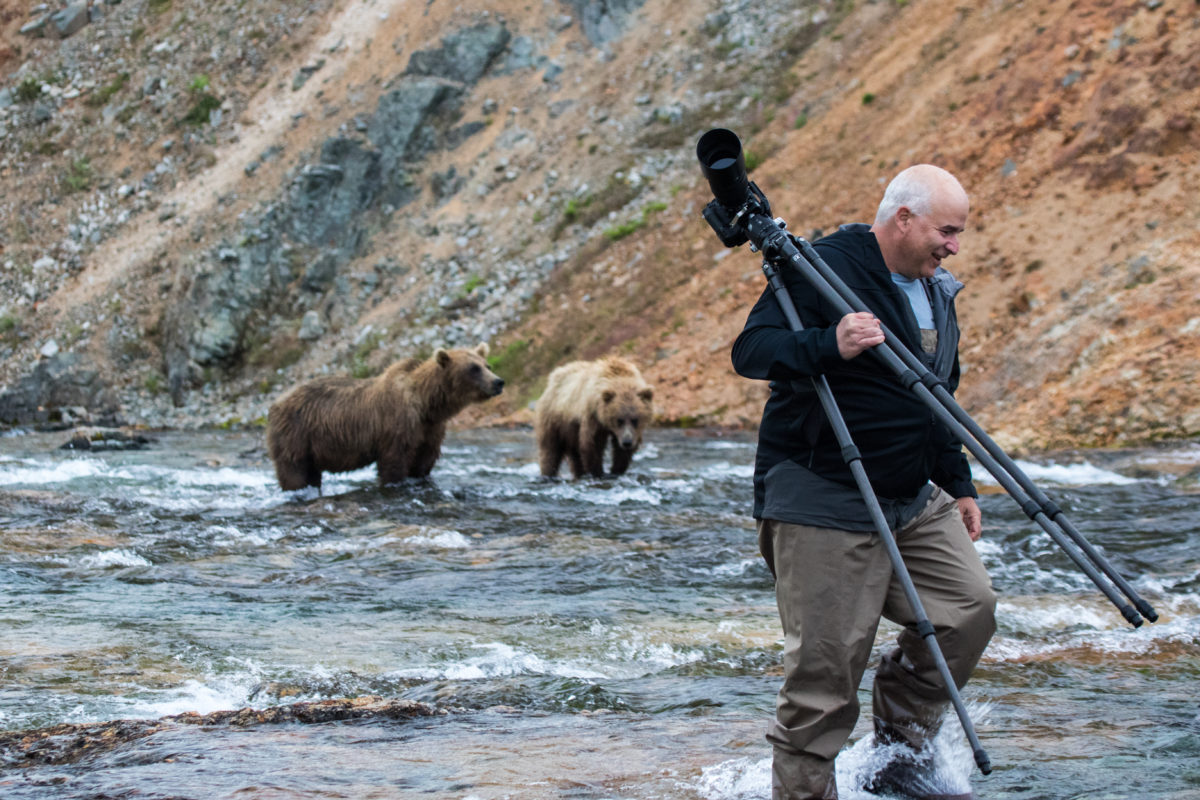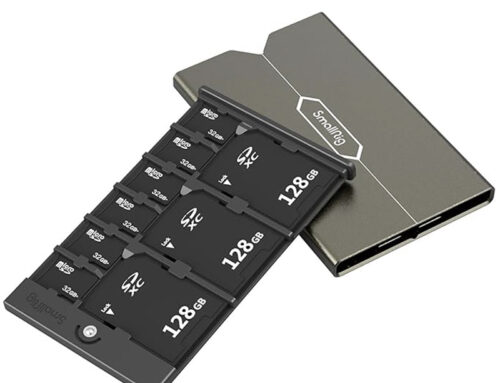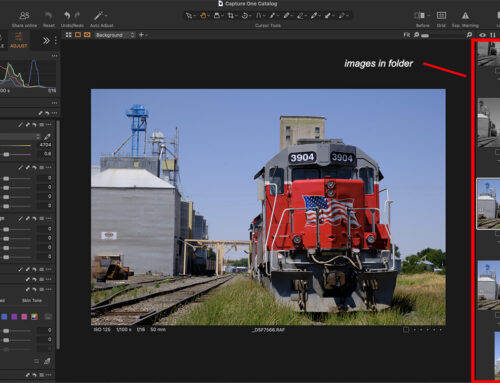What is essential to you in your photo bag? That one thing you won’t leave home without when you go on a shoot. Is it dependent on what you’re going to be shooting or is it just an essential all of the time? Have those “essentials” changed over time for you?
As I’m sure you have, I have a core list of essentials that I take with me on every shoot, those indispensable items I won’t leave home without, whether it’s a one day or multi-day shoot, Call it a toolbox, insurance/security, or a comfort thing, I know I would feel a bit unsettled if I didn’t have these things along with me. As workshop season is gearing up, I thought about this year and my gear and if there are any changes to my “essential” list.
I don’t have a lot of things I consider “essential” in my photography because for most, I can work around not having them in some way out in the field, so thankfully my essential list is fairly short. Here’s a list of what I currently consider “my essentials”. This list is NOT my camera body(s) or lenses, it’s all the other paraphernalia associated with shooting
Essentials
Tripod – For the work that I do, tripods are still indispensable for me. I am looking to capture an image with the utmost in sharpness with minimal noise, so my ISO is low and my shutter speeds can be long. There really isn’t any good way to work around not having a tripod in the field and so I consider it one of my essentials.
L-Bracket – This is sort of part of the camera, but also sort of an accessory. If you don’t know what an L-Bracket is, it’s a plate in the shape of an L that you affix to your camera which allows it to be clamped in to a tripod bullhead. The reason I call this out here is the flexibility and speed that it brings to my shooting. If you used a traditional plate on the bottom of your camera, if you are shooting landscape orientation and wanted to switch to capture a vertical/portrait orientation of the scene, you have to do so much stuff to move the camera in to the vertical orientation and with most bullheads, your camera will have moved off center from where it was, so you may need to pick up tripod and recompose the scene. With an L-Bracket, you simply un-clamp the camera, flip it on to its side to and re-clamp on the other part of the L. Fast and you don’t have to recompose or fiddle with your ballhead/tripod at all! Every camera I own has an L-Bracket on it, that’s how essential it is for me.
Batteries – I always bring a sleeve full of fully charged batteries, even if I’m out for a “short” shoot. Mirrorless cameras can eat through batteries pretty fast and I don’t want to be caught not having enough juice to power the camera. AND, I don’t want to have to scramble to find recharging options, taking me away from my shooting. I use both OEM and aftermarket batteries to balance reliability and cost and provide me with enough batteries to see me through intensive sessions outdoors. Like memory, batteries are pretty cheap and there is no reason why you can’t have a handful of them. When you run out of juice there is no working around that and you gotta come home.
Memory Cards – We hear it all the time, memory is cheap. Yep it is, that’s why I also travel with a sleeve full of memory cards, ranging from 32gb to 128gb. I think I calculated once I have enough memory cards to take upwards of 7000 frames. Other than our weeklong Alaska workshop, I will never ever come close to using this much capacity. However, i never want to be in the field and have run out of memory and then have to spend time, and make decisions, to delete images off of the cards in order to shoot more. Making these decisions in the heat of battle, on a small LCD screen never ends well and I don’t want to have to do that, so I always have ample memory cards.
Polarizer – Living in the PNW, where water and rain are abundant, dealing with glare and reflections caused by water are a normal occurrence when I’m out shooting. The glare reduces color and saturation, prevents you from seeing beneath the waters surface and all sorts of other cruddy stuff. AND, this is a big AND, there is no good way in post-processing to compensate for this glare/reflection. It is essential you deal with it at the time of image capture. For that reason, that’s why I always have a circular polarizer with me.
Graduated Neutral Density Filters – This one is a bit subjective and could be argued either way. Shooting a lot of landscapes at sunrise and sunset, there usually is a pretty high contrast in the scene from the sky to the foreground and I use GND filters to even out the exposure. Maybe I’m a traditionalist, but I take great pride in capturing the scene as best as I can in one shot and not rely on computer power to resolve an image. I know people can argue that they can do an exposure bracket and then pull those all together in post….good for them and its pretty cool how powerful photo editing software is. But for me, I strive to be a “one shot” type of guy and that’s why having GND filters in my bag is indispensable.
Variable ND – Another must have for me, a variable neutral density filter. Either variable or a selection of different strengths to cut down the amount of light coming in to the camera. When I’m out shooting waterfalls or creeks, or clouds streaking across the sky, I want to have some motion blur in the image. If there is too much light, I can’t get a slow enough shutter speed without using an ND filter to block some of the light. Getting that silky smooth water flowing over a cascade, that is an essential part of the image, AND, there is no way to “fix” this in post, it has to be captured in the camera when you take the picture. That’s why this indispensable for me.
Almost Essentials
GND Filter Holder – I used to use a holder for my GND filters religiously. Put the filter in the holder, adjust it to the right level in the frame and then don’t mess with it. And, when it was time to trip the shutter, my hand wasn’t in contact with the camera. I have found that in the interest of speed and hassle, I’m not using it 100% of the time any more. Maybe 85-90% of the time I’ll use the holder, the other times I’ll handhold it so I can be faster and more nimble. Still I think it’s critically important, for me its just not as important as it once was.
Cleaning cloths – Good quality cleaning cloths are sometimes more important than you may think. Have you ever tried to clean something with a cloth that won’t absorb moisture and all you do is push the water around? Or cloths that pick up most of the water but leave streaks? Having a killer cloth that will pick up all of the water and not leave streaks frees you up to not worry as much about moisture control and focus on your shot.
Remote Cable Release – It used to be essential, but has moved in to the “almost” category for me. The concept of not having your hands on the camera when the shutter trips in order to remove any possible vibration is still very valid and I practice this continually. These days though, I often times rely on the built in 2 second timer to trip the shutter while my hands are off the camera. That works for most landscape scenarios just fine. The only time I prefer a remote cable release is when I’m shooting on the coast and capturing wave action as it comes up or recedes on the beach. I love to capture the sense of motion in the waves and oftentimes I need to trip the shutter at “just the right” time to capture the streaks of foam at the right shape and density for what I’m trying to do. So for this, I use the cable release.
Headlamp – I always, always have a headlamp with me, in every camera bag I own. It’s not essential but so very close. Shooting sunset in to twilight and then walking back to the truck, having light is so so helpful so I don’t fall in to a ditch!
Multi-Tool/Tools – I carry a small multi-tool in my camera bags for any unforeseen circumstance. Fighting tripods or L-Brackets, cutting chores, etc…. And, if any of my equipment requires special tools or particular wrench sizes, I bring those along with me. Usually only a couple of allen wrenches. When you need to make an adjustment or something is stuck and you’re miles away from any hardware store, it sure helps to have your own tools that you know will fit.
I’m sure there are a couple more things that I’m forgetting, but for now this list is a pretty good summary of what I consider essential, or almost essential. Do you have any other essentials that you always carry? Leave me a comment as I’d love to hear what works for you.
I am a photo workshop leader based in Oregon. I lead group and individual workshops to many different locations throughout the year. If you are interested in getting more information, please visit my site John Pedersen Photography





Leave A Comment